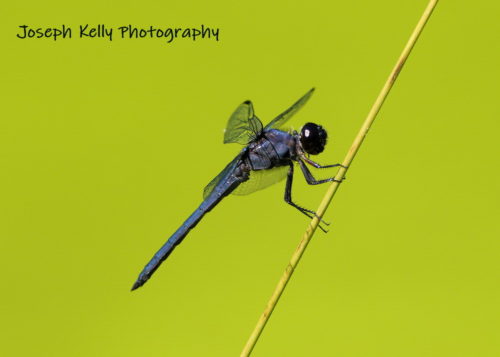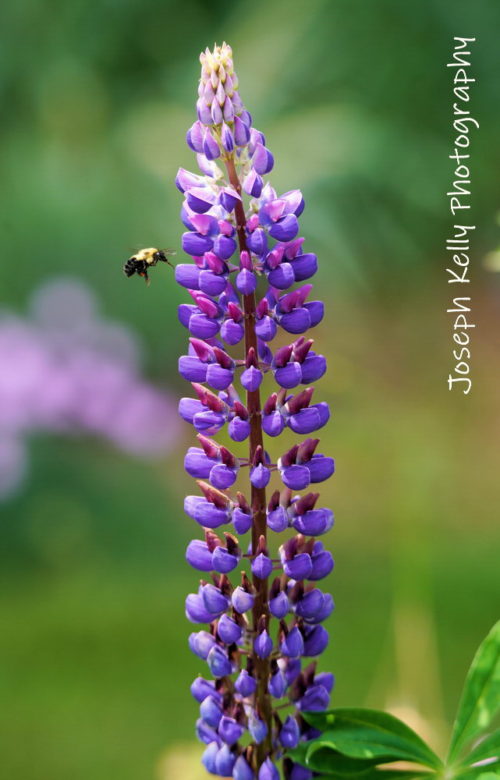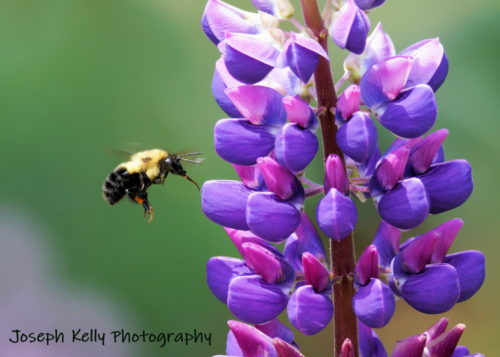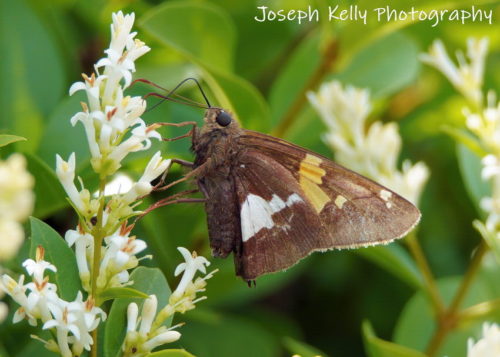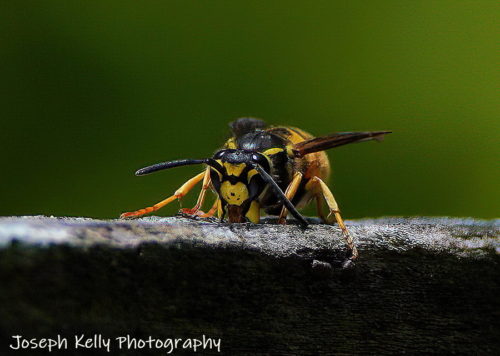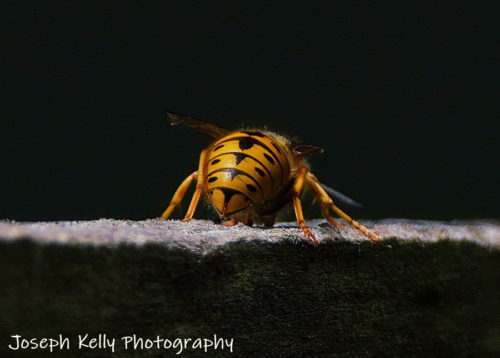Tuesday, July 7, 2020,
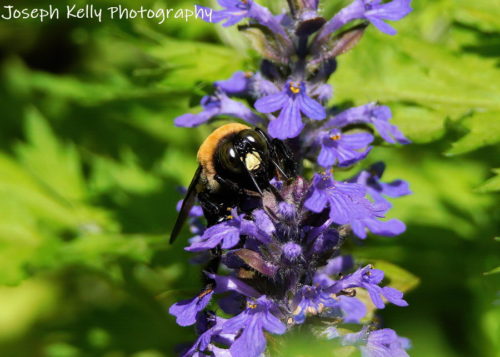
This is not a bumblebee. To the uneducated eye – mine – it certainly looks like one. Just look at it. A chubby bee – at least I got that part right – with black and yellow markings. That’s a bumblebee, right? Well, no. Not in this case.
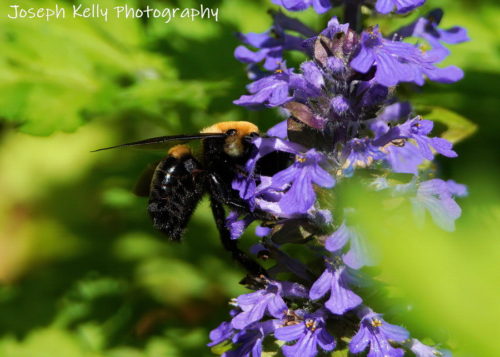
I had sent these photos to my friend Sue Avery. She’s the lady that allows me to sound intelligent when I describe flowers. I’ve mentioned her here before. Not only is she my go to source for flower identification, but she has her own blog, which is beautifully written. I am always in awe of her prose. Sue was able to ID this pretty flower as Bugleweed. It is not a native plant and can be an aggressive spreader. If I sound informed, it is only because I am quoting Sue. Without her help, this post may have been titled, “A Bee on Purple Flowers.”
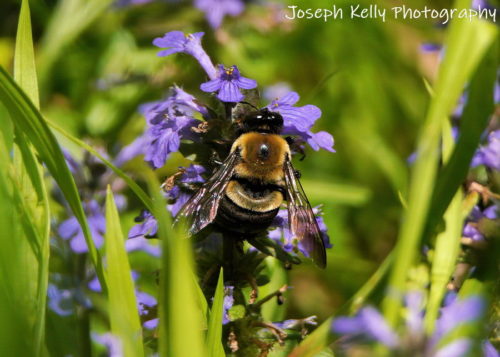
But wait, there’s more. Our story doesn’t end there. Three weeks ago, I had posted a pair of photos of a Yellow Jacket. I had posted them on Facebook as well as here. One of the commentators there was able to inform me of the exact species of Yellow Jacket I had managed to photograph. I was duly impressed, so much so that I sent her these photos to see if she could identify what kind of bee I had here. As it turns out, Jody Gangloff-Kaufmann is a professional entomologist and more than knows her stuff. She was able to explain to me that this was no bumblebee. Instead it is a male Carpenter Bee. Its white face is the main field mark that identifies this as a male. The female Carpenter Bees do not wear white makeup.
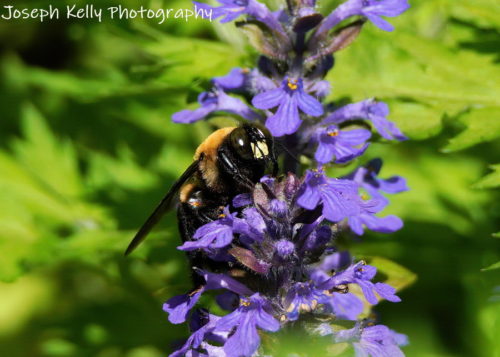
If I sound the least bit informed, it is only because I have folks like Jody and Sue helping me out. Honest. JK.

